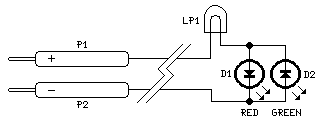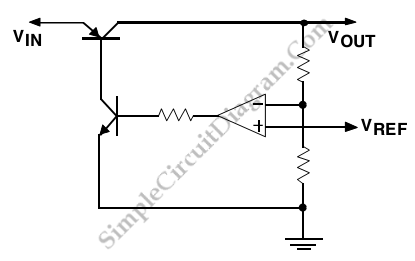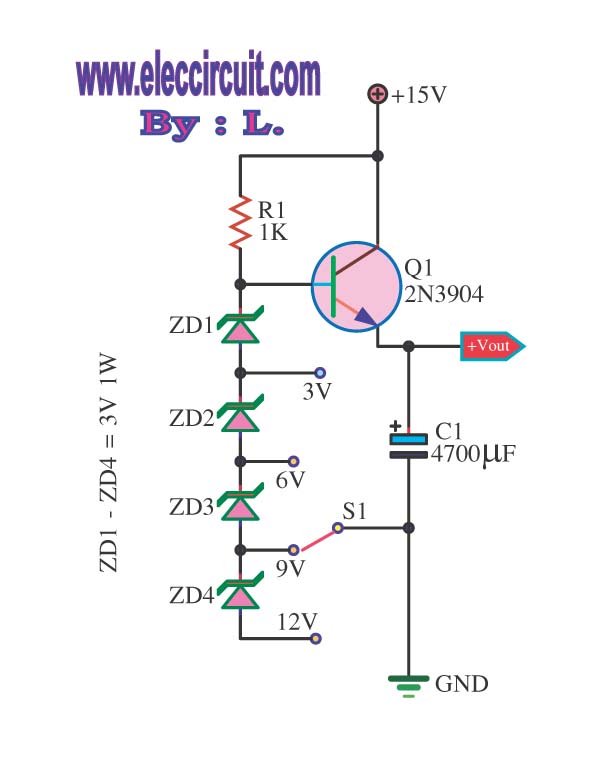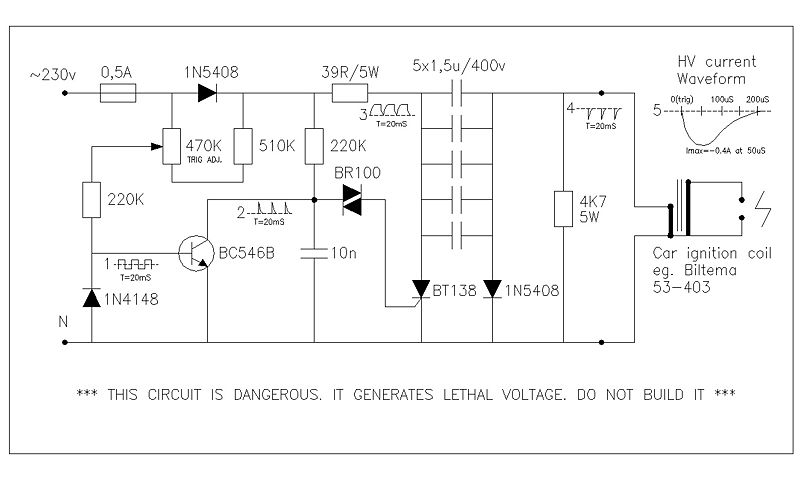
Mains Voltage Probe

This circuit is not a novelty, but it proved so useful, simple and cheap that it is worth building. When the positive (Red) probe is connected to a DC positive voltage and the Black probe to the negative, the Red LED will illuminate. Reversing polarities the Green LED will illuminate. Connecting the probes to an AC source both LEDs will go on. More: The bulb limits the LEDs current to 40mA @ 220V AC and its filament starts illuminating from about 30V, shining more brightly as voltage increases. Therefore, due to the bulb filament behavior, any voltage in the 1.8 to 230V range can be detected without.
This circuit functions as a simple voltage indicator, utilizing two Light Emitting Diodes (LEDs) and a bulb as a current limiter. The circuit is designed to provide visual feedback based on the polarity and type of voltage applied to the probes.
The circuit comprises a Red LED and a Green LED, which are connected in such a manner that the Red LED lights up when a positive DC voltage is detected at the positive probe (red) and the negative probe (black) is connected to ground or a negative supply. Conversely, when the polarity is reversed, the Green LED illuminates, indicating the presence of a negative voltage.
In the case of an AC voltage, both LEDs will activate simultaneously, providing a clear indication that alternating current is present. This dual LED configuration allows for quick identification of voltage type, which is particularly useful in troubleshooting electrical circuits.
The inclusion of a bulb in the circuit serves a dual purpose. Primarily, it acts as a current limiting device, ensuring that the LEDs do not exceed their maximum current rating of 40mA, especially when connected to high voltage AC sources up to 220V. The bulb's filament begins to glow at approximately 30V, which enhances the visual feedback of the circuit as the voltage increases. The filament's brightness correlates with the voltage level, allowing for a rough estimation of the voltage present.
This circuit is capable of detecting a voltage range from 1.8V to 230V, making it versatile for various applications. The simplicity and low cost of components make this circuit an attractive option for both hobbyists and professionals who require a straightforward voltage detection solution.This circuit is not a novelty, but it proved so useful, simple and cheap that it is worth building. When the positive (Red) probe is connected to a DC positive voltage and the Black probe to the negative, the Red LED will illuminate. Reversing polarities the Green LED will illuminate. Connecting the probes to an AC source both LEDs will go on. The bulb limits the LEDs current to 40mA @ 220V AC and its filament starts illuminating from about 30V, shining more brightly as voltage increases. Therefore, due to the bulb filament behavior, any voltage in the 1.8 to 230V range can be detected without
🔗 External reference
This circuit functions as a simple voltage indicator, utilizing two Light Emitting Diodes (LEDs) and a bulb as a current limiter. The circuit is designed to provide visual feedback based on the polarity and type of voltage applied to the probes.
The circuit comprises a Red LED and a Green LED, which are connected in such a manner that the Red LED lights up when a positive DC voltage is detected at the positive probe (red) and the negative probe (black) is connected to ground or a negative supply. Conversely, when the polarity is reversed, the Green LED illuminates, indicating the presence of a negative voltage.
In the case of an AC voltage, both LEDs will activate simultaneously, providing a clear indication that alternating current is present. This dual LED configuration allows for quick identification of voltage type, which is particularly useful in troubleshooting electrical circuits.
The inclusion of a bulb in the circuit serves a dual purpose. Primarily, it acts as a current limiting device, ensuring that the LEDs do not exceed their maximum current rating of 40mA, especially when connected to high voltage AC sources up to 220V. The bulb's filament begins to glow at approximately 30V, which enhances the visual feedback of the circuit as the voltage increases. The filament's brightness correlates with the voltage level, allowing for a rough estimation of the voltage present.
This circuit is capable of detecting a voltage range from 1.8V to 230V, making it versatile for various applications. The simplicity and low cost of components make this circuit an attractive option for both hobbyists and professionals who require a straightforward voltage detection solution.This circuit is not a novelty, but it proved so useful, simple and cheap that it is worth building. When the positive (Red) probe is connected to a DC positive voltage and the Black probe to the negative, the Red LED will illuminate. Reversing polarities the Green LED will illuminate. Connecting the probes to an AC source both LEDs will go on. The bulb limits the LEDs current to 40mA @ 220V AC and its filament starts illuminating from about 30V, shining more brightly as voltage increases. Therefore, due to the bulb filament behavior, any voltage in the 1.8 to 230V range can be detected without
🔗 External reference





